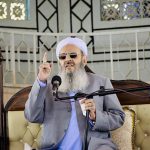 Many believed that Colonel Gaddafi’s regime in Libya would withstand the gale of change sweeping the Arab world because of its reputation for brutality which had fragmented the six million-strong population over the past 42 years.
Many believed that Colonel Gaddafi’s regime in Libya would withstand the gale of change sweeping the Arab world because of its reputation for brutality which had fragmented the six million-strong population over the past 42 years.
Political Islam, whether radical or moderate, has been the principle victim, especially after an Islamist rebellion in Cyrenaica, the country’s eastern region, in the latter 1990s. Other political currents have been exiled since 1973, when “direct popular democracy” was declared and the jamahiriyah, the “state of the masses”, came into existence.
Even the Libyan army was treated with suspicion, with its officer corps controlled and monitored for potential disloyalty. No wonder that major units now seems to have broken away from the regime and made the liberation of Eastern Libya possible.
Causes for collapse
The only structures that the regime tolerated, outside the formal structure of the “state of the masses” Colonel Gaddafi’s idiosyncratic vision of direct popular democracy in Libya’s stateless state in which all Libyans were theoretically obliged to participate – came from Libya’s tribal base and the Revolutionary Committee Movement, itself tied to the regime by tribal affiliation and ideological commitment and used to discipline and terrify the population through “revolutionary justice”.
Apart from that, there was only the colonel’s family and the rijal al-khima, the “men of the tent” – the colonel’s old revolutionary comrades from the Union of Free Officers which had organised the 1969 revolution against the Sanussi monarchy which had brought the colonel to power. And even the tribes did not necessarily support the regime, although they were constrained by the “social popular leadership”, a committee bringing together thirty-two of the major tribal leaders under the watchful eye of the regime.
Yet, in reality, the Sa’adi tribes of Cyrenaica, for example, had little love for the regime, for they had been the cradle of the Sanussi movement which had controlled much of modern Libya and Chad in the nineteen century. In partnership with the Ottoman Empire, the Sa’adi led resistance to Italian occupation between 1911 and 1927.
They had been disadvantaged by the revolution, not least because the revolutionaries came from three tribes – the Qadhadhfa, the Maghraha and the Warfalla – which had originally been subservient to them.
It could be argued, in short, that the revolution was, at its heart, a reversal of tribal politics, despite its ostensible commitment to Arab nationalism.
Geographic issues
Indeed, the regime has been consciously constructed on the back of these three tribes which populated the security services and the Revolutionary Committee Movement.
Yet even they had their own grievances; the Warfalla had been implicated in the unsuccessful 1993 Bani Ulid coup and its leaders had refused to execute those guilty as a demonstration of their loyalty to the regime.
Colonel Gaddafi’s henchmen organised the executions instead, earning tribal enmity and probably explaining why tribal leaders so quickly sided with the opposition when the regime began to collapse.
Then there is also a geographic imperative for the rapidity of the collapse of the regime. Libya is essentially a desert, with the only areas that can support intensive residence located in the Jefara Plain, around Tripoli in Tripolitania, and the Jabal al-Akhdar behind Benghazi in Cyrenaica.
The result has been that Libya’s six million-strong population, as a result of oil-fired economic development in the rentier state that emerged at the end of the 1960s, is now highly urbanised and largely concentrated in these two cities and the satellite towns around them.
Corruption
This means that any regime which loses control of them has lost control of the country, even if it controls all outlying areas, such as the oil fields in the Gulf of Sirt between them, which is also the home base of the Qadhadhfa, or the Fezzan that still seems to be loyal to the Gaddafi regime.
It is this that explains how, once the army in Benghazi changed sides, the regime lost control of Eastern Libya and why its hold on Tripoli, the capital, has been so rapidly contested.
Nor should the nature of the regime or the Gaddafi family be ignored as a factor for the collapse. The regime has, in recent years, benefited from growing foreign investment in Libya, alongside its massive oil revenues, after sanctions in connection with the Lockerbie affairs were removed in 1999.
As foreign economic interest grew, so did corruption and, although Colonel Gaddafi himself may not have been corrupt, his seven sons and one daughter certainly were, drawing their fortunes from commissions and income streams siphoned off from the oil-and-gas sector.
Libyans themselves have been excluded from the benefits of oil wealth for decades, so the blatant corruption inflamed their resentment in recent years.
‘Foreign mercenaries’
In addition, the Libyan leader, who had no formal role inside the jamahiriyah but made sure that the Revolutionary Committee Movement answered only to him, has played on the aspirations of his sons to succeed him, pitting one against the other to ensure that none of them could amass sufficient power to threaten his position.
In such an atmosphere of eternal mistrust and suspicion, it is hardly surprising that the ultimate bastion of the regime has been the “foreign mercenaries” that have terrified Libyans with their indiscriminate violence during the country’s latest revolution.
Yet, they too form part of the leader’s conception of the state. In the 1980s, Libya opened its borders to all who were Muslim, as part of its vision of Arab nationalism and Islamic radicalism.
The regime also recruited an “Islamic Legion” to aid it in its foreign adventures, particularly in Africa, as Chad, Uganda and Tanzania were to discover.
In 1997, Libya also renounced its self-image as an Arab state, prioritising its African destiny instead, opening its borders to sub-Saharan Africa, despite the intense domestic tensions that the inflow of migrants generated, which resulted in riots and deaths in September 2000.
Now, apart from using African migrants as a tool to coerce European states such as Italy with the threat of uncontrolled migration, it has also recruited them into its elite forces around the “Deterrent Battalion” (the 32nd Brigade) which are used solely for internal repression.
They have no loyalty to Libyans who hate them and they are the forces on which Colonel Gaddafi relies to ensure that his regime ends in a bloodbath to punish Libyans for their disloyalty to his political vision.
The future
Whatever the Colonel thinks – and it is what he thinks that determines the struggle inside Libya today – there are objective factors that will determine the outcome.
Unrest in Western Libya has already led to towns in the Jefara Plain falling to the widening anti-regime movement. Zuwara is said to have been taken over by them and major struggles are taking place between armed forces loyal to the Gaddafi regime and the inchoate movement opposed to it in Misurata and Zawiya, where helicopter gunships seem to have been used.
Even if Tripoli is still under regime control, the towns surrounding it seem to be slipping away. Eventually, the leader will control only the capital and nothing else. There is no doubt that the struggle is becoming increasingly bloody, with estimates of losses being set at between 600 and 2,000 dead.
The outcome will be determined by the loyalty of the armed forces and the institutions of the state towards the Libyan leader.
Yet this is increasingly in doubt; two ministers, from the justice and the interior, have resigned and Libya’s diplomatic missions around the world are gradually falling way, including key missions at the United Nations in New York and in Washington. Diplomats say the are sickened by what they regard as genocide as Libya’s armed forces fire on unarmed demonstrators.
Even the armed forces are becoming increasingly unreliable – a belated revenge, no doubt, for the way in which they have been chronically mistrusted and misused. Few, in the armed forces or within the population, have forgotten the abuse heaped upon them by the regime after Libya was forced out of Chad with heavy losses in the late 1980s.
Who follows?
The problem is that it is extremely unclear what could emerge to replace the colonel’s unlamented regime.
One consequence of its unrestrained repression has been to ensure that no movement or individual has emerged as a natural alternative. Inside Libya, only the Muslim Brotherhood and some extremist Islamist groups have any formal presence.
Outside Libya there are myriad opposition groups, it is true, but there is no evidence that they have any real purchase inside the country.
There are also growing fears in European states along the northern shores of the Mediterranean of a flood of migrants and asylum-seekers fleeing the violence. And then there are the one million sub-Saharan African migrants marooned in Libya in the hope of crossing into Europe.
George Joffe is a Research Fellow at Cambridge University, and Visiting Professor at Kings College, London University, specialising in the Middle East and North Africa. He is the former Director of Studies at the Royal Institute for International Affairs in London (Chatham House).
The views expressed in this article are the author’s own and do not necessarily reflect Al Jazeera’s editorial policy.
Source: Al Jazeera










Comments